Dar Urtatim PresentsOttoman Women's Clothing | |||||||||||||||||||||||||||||||||||||||||||||
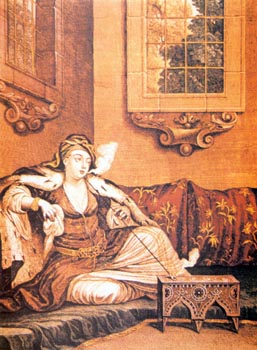 Harem woman relaxes, smoking a pipe |
 Haseki sultana - lead wife |
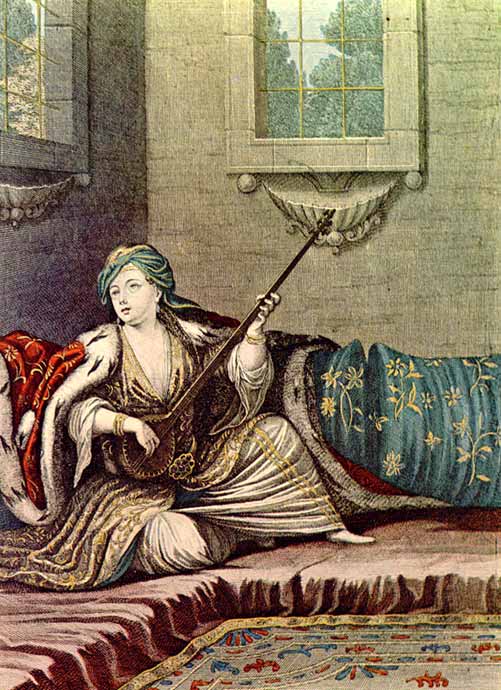 Harem woman playing what may be a saz |
1718 - Lady Mary Montagu
Lady Mary Wortley Montagu, the wife of the English ambassador to Turkey, spent two years in Turkey in the early 1700's. During her stay she wrote many letters decribing the clothing and habits of Turkish women - including a form of innoculation against small pox. In the center, a European painter portrays her in Ottoman dress in 1718.
 A Portrait of Laura Tarsi by Jean-Etienne Liotard presented as being Lady Mary |
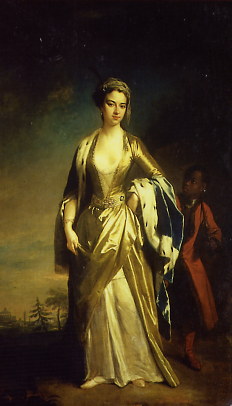 Protrait of Lady Mary by Johnathan Richardson |
 |
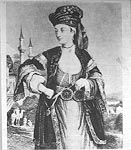 A lesser copy
|
The two flanking pictures are actually derived from a work from the 1740s by Jean-Etienne Liotard (see below), "A Portrait of Laura Tarsi", of which at least 3 versions exist by the artist himself, along with many lesser copies. They have long been mistakenly thought to be of Lady Mary.
1720-25 - Levni
Levni was an important Ottoman artist of the 18th century. He painted largely between 1720-25. Note that this is about 1-1/4 century after the SCA period ends. This means the slit sleeves on the enteri, the wide legged pants (which are actually NOT gathered at the ankle, but tied below the knee, the legs are so long), and the odd asymmetrical hats that curl up on one side are well out of period.
 Woman in outdoor dress |
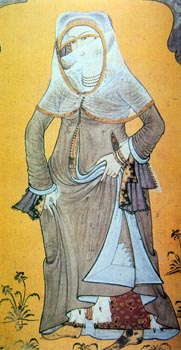 Woman in outdoor dress |
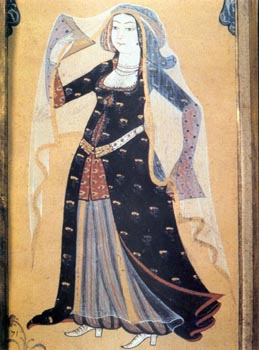 |
 It look like her hair is in many braids tied together at the bottom. |
 Note her many braids. She holds a spool of thread in her left hand. |
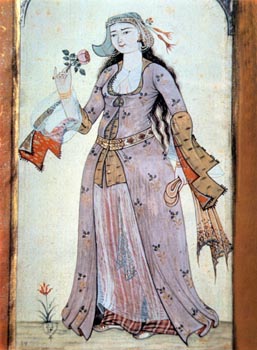 This woman wears her hair loose and fluffy |
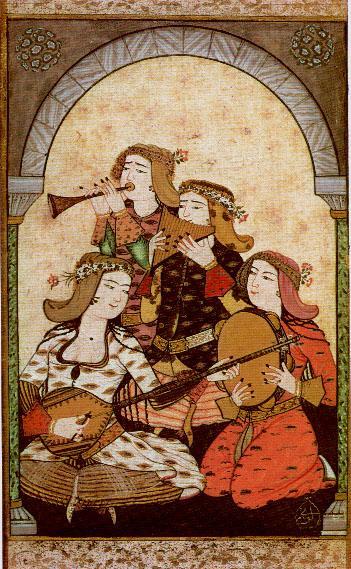 Note the multitude of braids on these female musicians. Their fingertips appear to be henna'ed. | ||
1720 & 1745 - Abdullah Buhari
Abdullah Buhari was another important Ottoman artist of the 18th century. He painted largely between 1720-45. His work is perhaps less charming than Levni's, but it is still useful in showing changing Ottoman fashions.
 Woman with Flower |
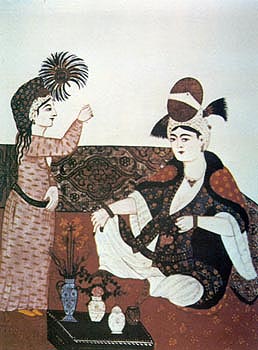 Seated Woman with Servant |
 Woman in Indoor Winter Outfit |
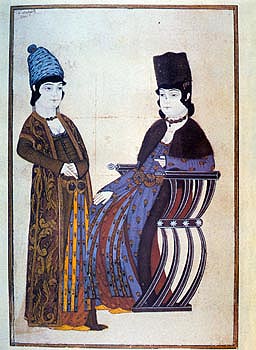 Two Women, one Seated in a Chair |
Mid-18th Century
1730s-1750s - Jean-Étienne Liotard
Swiss artist Jean-Étienne Liotard drew the pictures below with pastels, with their delicate, cool colors, and attractive but not crudely sexualized women in homey settings. Some, if not most, of his models were French noblewomen, and some of the items in the pictures were Liotard's own, which he used as props to create the setting.
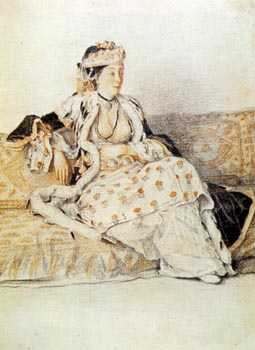 Seated Woman in Gold and Silver |
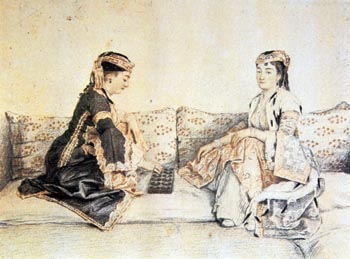 Greek Women Playing Mancala |
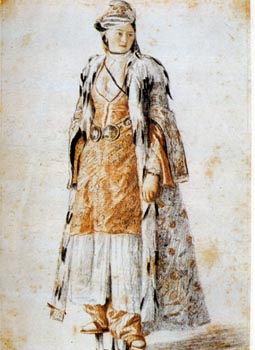 At the Entrance of the Hammam (Baths) |
 Woman Seated on Blue Divan |
 Marie Adélaïde of France, daughter of King Louis XV, in Turkish dress, 1735 |
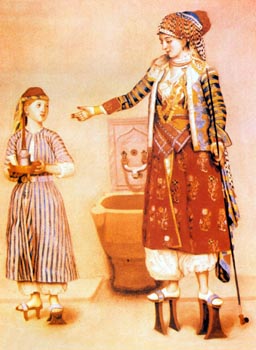 European Woman in the Hammam (Baths) with her Slave |
The French School
The artists of the French School were French-trained Ottoman painters.
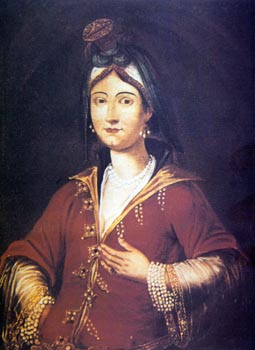 |
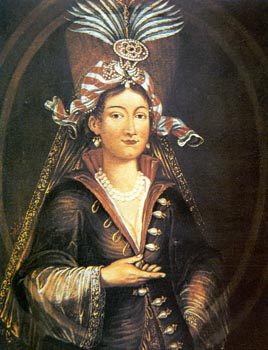 |
 Note her loose fluffy hair |
 Note her many braids |
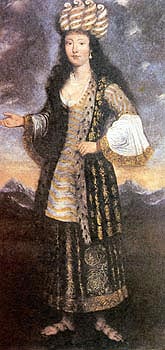 Painting titled "Eastern Woman". |
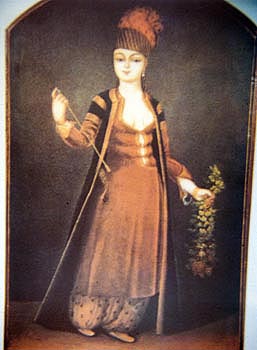 "Coming Back From the Orchard", by "Rafael" |
Late 18th Century
Interestingly, late 18th century Ottoman clothing shows clear influence from the French: fabrics are similar - pastel, with tiny patterns of flowers and narrow stripes, there is a high-waisted look to the entari, and the enteri sometimes has deeply cut neckline.
Additionally, women are now often wearing their hair down and somewhat fluffy.
Husein Fazil bin Tahir Enderuni
The pictures below come from the 1793 Huban-name ve Zenan-name by miniature painter Husein Fazil bin Tahir Enderuni
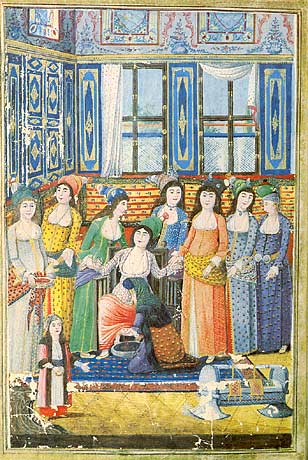 Woman on Birthing Chair |
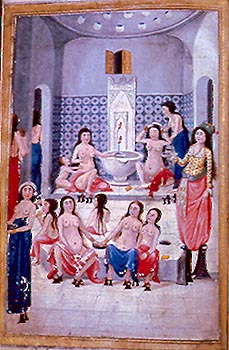 Women in the Bath (Hammam) |
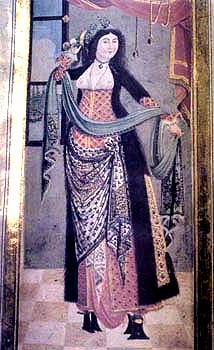 Lady from Constantinople |
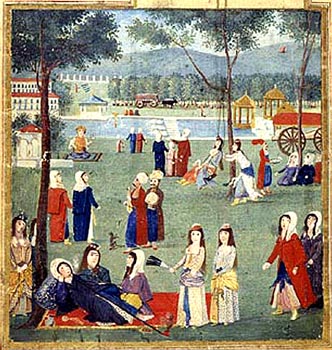 Harem Women in the Palace Garden |
Ottoman Artists
Clearly from the same time period, based on painting style, use of color, and details of the woman's dress, but i am not certain of their source...
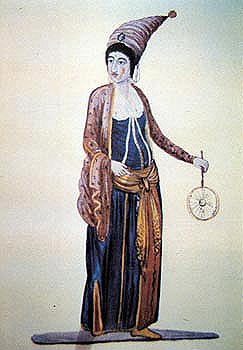 Woman holding a fan |
Other European Artists
I have not been able to ascertain the artist of these pictures, but they are clearly a continuity of the very late 18th century style.
 Young Senior Suntana |
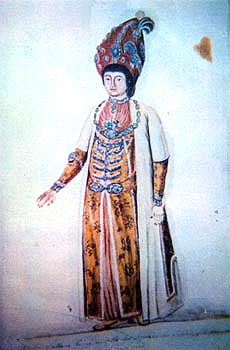 Haseki Suntana |
French artist Jean-Baptiste Hilaire (1751-1828), 1787
 Muslim Spring Outfit |
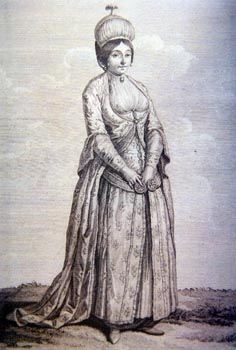 Cariye: Female Slave |
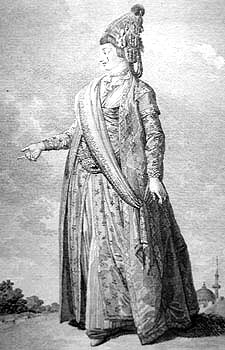 Muslim Summer Outfit |
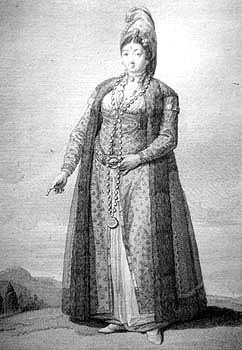 Muslim Winter Outfit |
 Woman in Outdoor Coat (Feraçe) |
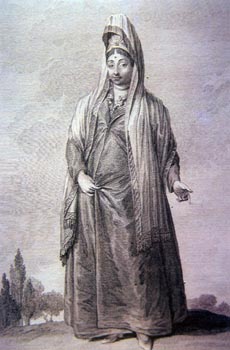 Woman in Outdoor Coat (Feraçe) |